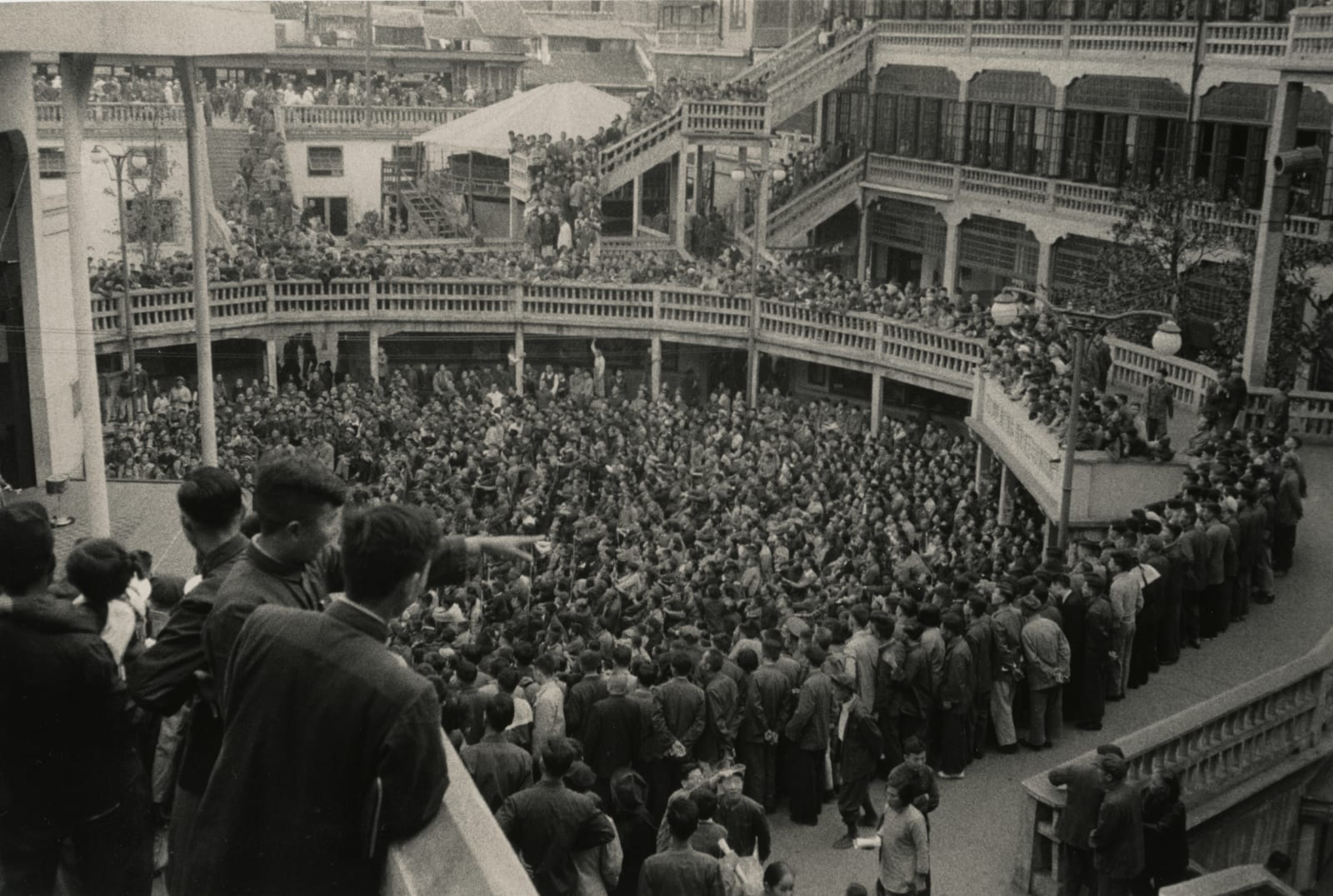-
Artworks

Hiroshi Hamaya
Recreational Field, Shanghai, 1955Vintage silver gelatin printPaper Size: 21.1 x 30.8 cmLiterature
About this print:
Japanese photographer Hiroshi Hamaya travelled to China several times during the Second World War, following Japan’s invasion of China. He was commissioned by Japan’s nationalist government to photograph industrial developments and state events. In the aftermath of Japan’s defeat, Hamaya was one of the only photographers who had been actively engaged in propaganda efforts to publicly declare his contrition, and to draw attention to photography’s complicity with the ultra-nationalist regime.
One of the ways Hamaya worked through his guilt in the post-war period was to revisit China, to photograph ordinary people and the changing political situation. He was amongst the artists invited to travel by the Japan-China Exchange Association. In contrast with the photographs taken by many contemporary American photographers, in thrall to a Cold War agenda which decried “Red” China, Hamaya treated the country as a communitarian, civilizational entity, founded on the hard work of citizens. He published his first collection of Chinese photographs in his 1958 book ‘The China I Have Been to See’, and continued to visit throughout his career.
Biography:
Born and raised in Tokyo, Hiroshi Hamaya (1915 - 1999) is considered to have been one of the most eminent Japanese documentary photographers of the 20th century. Working as an aeronautical photographer and a freelance contributor to magazines during the 1930s, Hamaya began his career documenting his hometown from the sky and the streets. An assignment in 1939 saw Hamaya travel to the rural coast of the Sea of Japan, where he became interested in documenting the traditional customs of its people and the austere environment of the region. Over the next two decades he recorded life in remote coastal prefectures, developing a more humanist, ethnographic approach toward photography. In the early 1950s Hamaya settled in the seaside town of Ōiso, where he began to review his body of work and put together his first photobooks.
Later in his career, Hamaya would return to the sprawling urban labyrinth of his youth, to chronicle Tokyo's massive demonstrations against the renewal of the US-Japan Security Treaty (ANPO) in 1960. The resultant photobook, Record of Anger and Grief (1960), would become one of the most famous examples of Japan's post-war visual culture of protest. Aside from his political reportage photography, Hamaya completed a series of landscapes, travelling within Japan and abroad: "I came to realize that natural features in Japan, like the nature of its people, were extremely diversified and complex. I intended to investigate this conclusion with my own eyes."
Hamaya was the first Japanese photographer to join Magnum, and his work was amongst the only Japanese contributions to Edward Steichen’s groundbreaking photography exhibition, ‘The Family of Man' (1955). More recently, his accolades include the Master of Photography Award from the International Centre of Photography, New York (1986) and the Hasselblad Award. (1987). His works are included in renowned private and public collections worldwide, and he was recently honoured with a two-man show at the J. Paul Getty Museum, Los Angeles (2012).
